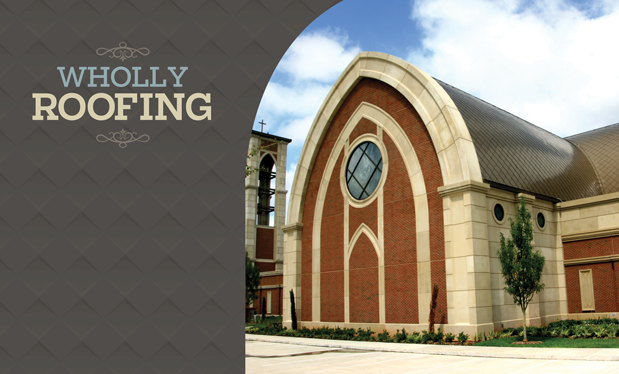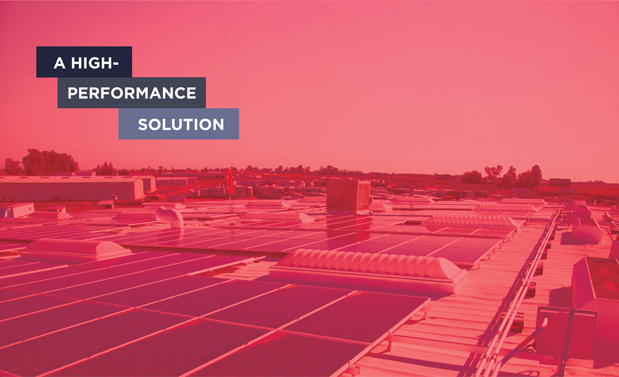When planning for a roof on a new building or reroofing an existing structure, roofing contractors face innumerable decisions about what products to use and how to balance cost with performance. High-density polyisocyanurate cover boards are an important component in roof systems, providing a rigid substrate for a wide variety of roof membrane types as well as providing suitable protection for the underlying insulation.
A number of cover board products are currently available for the low-slope commercial roofing market. These products vary from traditional gypsum to new applications of polyisocyanurate technologies. Each product offers various benefits, and you should take care to select a product that is appropriate for a specific project's needs and objectives.
For example, some cover boards offer high levels of compressive strength that may provide advantages for a unique building scenario. Other products may be manufactured using a material preferred by the building owners. In general, adding a cover board will enhance overall roof system durability and can defray long-term maintenance costs, and understanding the unique benefits of a high-density cover board product and key considerations when installing can help you reduce labor and save money during the construction process. High-density cover boards also can contribute to lower building energy use costs during a roof system's life.
Benefits
High-density cover boards provide a combination of impact resistance, energy savings and ease of installation. They are manufactured with coated glass facers that provide well-recognized versatility during installation and service-life durability. By adding a cover board, roofing contractors can enhance the long-term performance of a commercial roof system in addition to gaining the following advantages:
- Lightweight: High-density cover boards weigh on average 66 to 80 percent less when compared with same-thickness gypsum products.
- Water resistance: The water absorption by volume of high-density cover boards is about 4 percent. High-density cover boards will not rot or dissolve; they can maintain their integrity under adverse weather conditions.
- Fewer truckloads: High-density cover boards can be shipped with about three times more square feet per truckload, requiring fewer trucks and leading to fuel and transportation savings as well as less traffic congestion on job sites.
- Reduced product staging time: High-density cover boards allow for reduced crane time with less hoisting, loading and staging costs. The cover boards are easier to carry and maneuver around a roof. Pallets need not be broken or redistributed as they might need to be with other products.
- Weight: When considering a building's structural design, high-density cover boards will contribute less dead load to a roof compared with alternatives. This is important because lighter dead loads can add up to savings in structural costs for new construction. Lighter dead loads also mean fewer headaches when reroofing an existing building.
- R-value: In addition to providing suitable protection to a roof system, high-density cover boards contribute extra thermal resistance to a roof and can provide two to five times more R-value than gypsum-based products.
- Virtually dust-free: High-density cover boards are a closed-cell polyisocyanurate product that contribute less dust than gypsum products during board cutting, which will reduce the potential for seam contamination of the roof cover before waterproofing the laps. Less mess also can lead to improved productivity.
- Mold: High-density cover boards resist mold growth when tested under ASTM D3273. This makes high-density polyisocyanurate cover boards highly suitable for applications prone to elevated moisture conditions.
- Resiliency: Higher compressive strength and flexibility in cover boards improves a roof's resiliency to foot traffic, heavily loaded carts and dropped tools.
- Versatility: High-density cover boards can be used in new construction, reroofing and re-cover applications. They are suitable in mechanically attached, adhered and ballasted roof assemblies.
Precautions
Despite the benefits, you should be careful when adhering high-density polyisocyanurate cover boards in a low-rise foam adhesive. Because of their light weight, it is important that after cover boards are placed in the low-rise foam adhesive they are ballasted to ensure appropriate contact with the adhesive and substrate. The ballasting of a board typically is accomplished by using buckets of adhesive or fasteners placed across the board near the edges. This application is similar to adhering polyisocyanurate insulation in low-rise foam adhesive. This practice differs from heavier gypsum cover board products, and ballasting may not be necessary.
Similar to all roofing products, high-density cover boards must be installed properly to achieve optimal performance. Note that high-density cover boards are not intended to be used as a thermal barrier over combustible and noncombustible roof decks. Always consult manufacturer's installation instructions when installing any roofing product.
High-density cover boards are manufactured in 4- by 4-feet and 4- by 8-feet sizes and various thicknesses. High-density cover boards may be adhered to a roof system using adhesives or attached via fasteners and insulation plates. Consult the manufacturer's installation guidelines for specific information regarding approved fasteners/plates and adhesives as well as recommended attachment patterns. Installing high-density cover boards with improper attachment techniques can cause premature failure of the roof system or result in a system that does not perform as designed. Manufacturer installation guidelines will provide information about various product and system approvals.
Before installing high-density cover boards, protect them from moisture exposure and keep them away from open flames. Installing wet or damaged products can degrade overall roof system performance. For additional information about recommended storage and handling procedures, consult the Polyisocyanurate Insulation Manufacturers Association's Technical Bulletin 109: Storage and Handling Recommendations for Polyiso Roof Insulation.
During installation, high-density cover boards can be easily scored and cut using a utility knife and should be installed with the edges butted firmly against one another. Stagger the joints of adjacent cover boards, and take care to install the cover boards by staggering the joints with the underlying roof insulation boards. Staggering the joints during the installation of insulation and cover board products will improve the thermal performance of a roof system by reducing routes for air or moisture intrusion.
Choose cover boards
Building owners may be quick to overlook the benefits of incorporating cover boards into their roofing projects. However, it's difficult to imagine an easier, more cost-effective way to protect a building owner's investment than with cover boards that will enhance a roof system's lifetime performance. High-density cover boards combine this protection with ease of installation for your crew.
Justin Koscher is president of the Polyisocyanurate Insulation Manufacturers Association.



